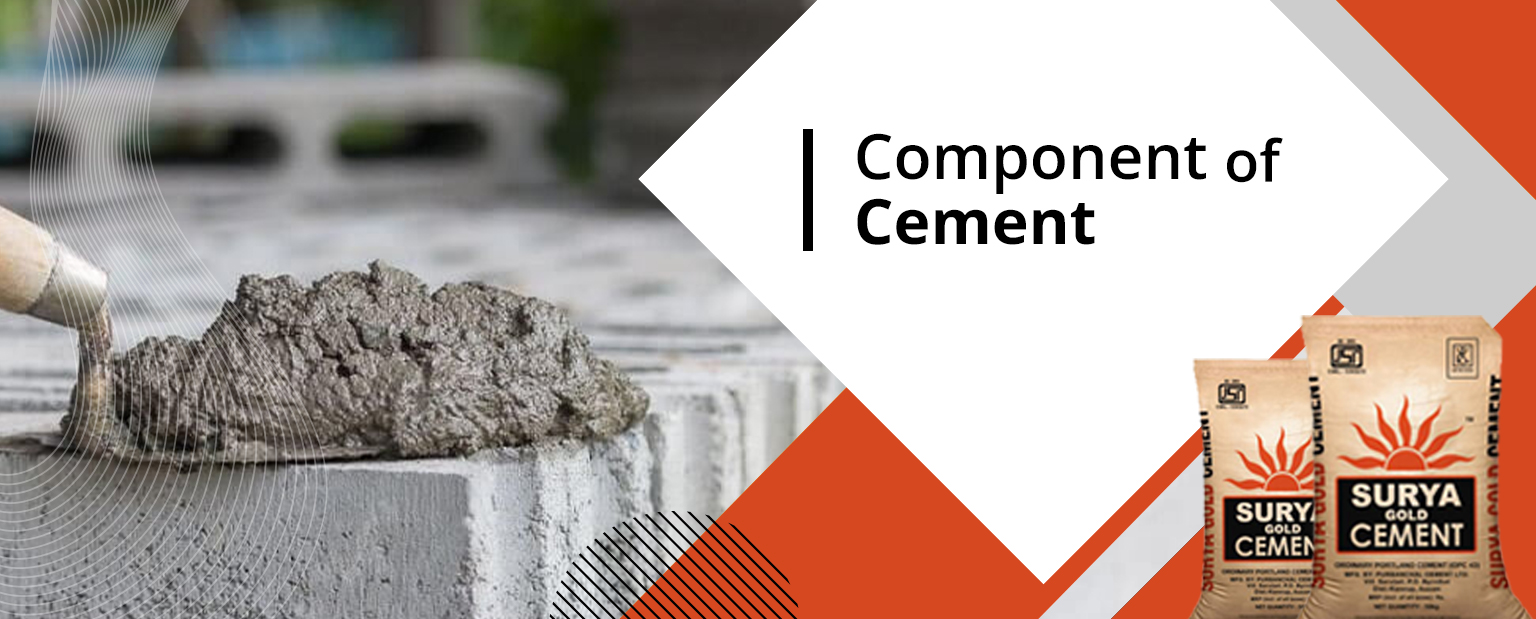Cement is considered one of the strongest binding materials and this material is required for building construction purposes. In fact, this material is a must in almost all types of constructions works. Therefore, the composition of cement is considered a matter of interest for Civil engineers. Here, in this content, you will come to know about the components of cement and their functionalities.
Components of Cement with Percentage
There are mainly eight major ingredients used in the cement composition. Here you will come to know about the names and their percentage. Let’s have a look at the name below and their respective percentage –
- Limestone – 60-65 percent
- Alumina – 3-8 percent
- Silica – 17-25 percent
- Iron Oxide – 0.5 – 6 percent
- Magnesia – 1-3 percent
- Alkaline – 0-1 percent
- Sulfur Trioxide – 1 – 3 percent
Main Components of Cement
Here you will come to know about the functionalities of the cement ingredients, and their usefulness also mentioned below-
- limestone – Lime is a kind of calcium hydroxide or calcium oxide. The presence of lime is required in sufficient amounts in order to form aluminates and silicates of calcium. The deficiency of line reduces the strength of cement. The presence of the excess amount of lime makes cement unsound.
- Silica – Silicon dioxide is abbreviately pronounced as silica. The chemical name of this ingredient is SiO2. A sufficient amount of silica must be present in cement in order to make enhance its strength. Silica imparts the required strength to cement. Silica should be present in cement up to 30 percent.
- Alumina – This is aluminium oxide, and the chemical formula of this ingredient is AI2O3. Alumina helps to impart quick setting features to cement. However, the presence of alumina in excess amount weakens the strength of the cement.
- Magnesia – Magnesium Oxide is termed magnesia. The chemical formula of this ingredient is written as MgO. It should be present in cement more than 2%. But the excess amount of Magnesia may reduce the strength of the cement.
- Iron Oxide – The chemical formula of iron Oxide is written as Fe2O3. It adds colour to cement. It acts as a flux. At high temperatures, the chemical comes in a chemical reaction with aluminium and calcium in order to form tricalcium aluminium ferrite. This is a kind of ingredient that provides strength and hardness to cement.
- Calcium Sulfate – The chemical name of Calcium sulfate is CaSO4. The ingredient is present in cement in the form of gypsum.
- Sulfur Trioxide – The chemical formula of this ingredient is written as SO3. It must be present in cement more than 2%. The presence of the excess amount of sulfur Trioxide makes the cement unsound.
- Alkaline – The presence of Alkaline in cement is required more than 1%. As per their different ingredients, their types also vary.
Cement has been classified into two main categories depending on its mechanism and hardening factor. These
Types of cement–
- Hydraulic cement
- Non-hydraulic cement
Depending on the composition and characteristics of these two types of cement, several other types of cement have been introduced into the market, and they are –
- Ordinary Portland cement
- Rapid hardening cement
- Portland Pozzolana cement
- Quick setting cement
- Sulphate resisting cement
- Blast Furnace cement
- Low heat cement
- High alumina cement
- White cement
- Coloured cement
- Sulphate resisting cement
- Expansive cement
- Air entraining cement
- Hydrophobic cement
Conclusion
These are the various types of cement available in the market. You can choose the type of cement as per your requirements. But whatever type of cement you choose, make sure the quality of the cement should be of a high standard. You can’t expect the quality work you desire without good quality cement. Therefore, the selection of the brand is important.
FAQs and Answers
Which is the major raw material of cement industry?
The major raw material used in the cement industry is limestone and It is estimated that limestone typically makes up 60-70% of the raw materials used in the production of cement. The use of limestone as the primary raw material in cement production is due to its abundance and low cost, making it a highly accessible and cost-effective option for the cement industry.



